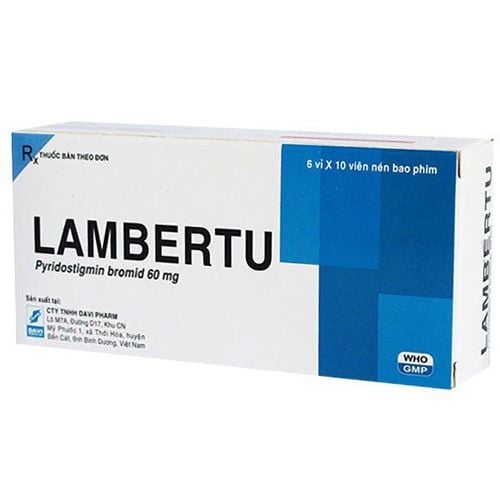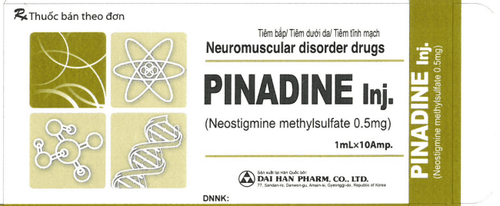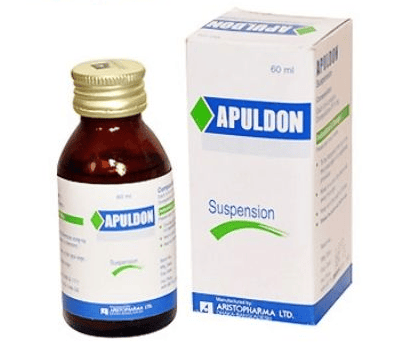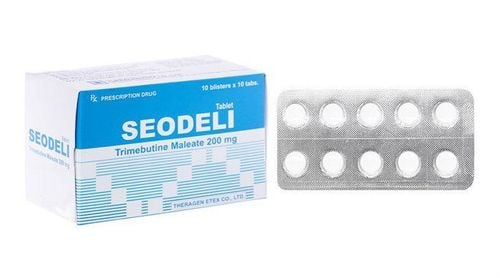This is an automatically translated article.
Neostigmine is available in the form of a syringe or tablet, which is a parasympathetic drug. The drug is used in the treatment of myasthenic conditions. To ensure effective use, users need to strictly follow the instructions of the doctor or pharmacist.
1. Uses of Neostigmine
What is Neostigmine? Neostigmine muscle relaxant is indicated in the treatment of the following conditions:Myasthenia gravis ; Paralytic ileus, urinary retention after surgery (after excluding mechanical obstruction); Detoxification from overdosage of cura-type muscle relaxants (non-depolarizing muscle relaxants such as: metocurin, tubocurarin, galamin or pancuronium). Contraindications to the use of Neostigmine:
Patients with intestinal obstruction and urinary tract obstruction mechanical causes or peritonitis, colonic aneurysm; People with a history of hypersensitivity to Neostigmine and Bromide (Bromide ions from Neostigmine Bromide can cause allergies) or other ingredients in the drug.
2. Administration and dosage of Neostigmine
How to use: Neostigmine bromide orally, Neostigmine methylsulfate intramuscularly, intravenously or subcutaneously. The oral dose is about 30 times the injection dose.
Dosage in adults:
Myasthenia gravis:
For diagnosis: Stop anticholinesterase drugs before 8 hours; Use Neostigmine methylsulfate intramuscularly at a dose of 0.022mg/kg; Use Atropin 0.011mg/kg IV just before (or IM 30 minutes before), Neostigmine 0.022mg/kg IM. If there is a cholinergic reaction, the test should be stopped and 0.4 - 0.6 mg of atropine given intravenously; If the results are inconclusive, the test should be repeated 2 days with a dose of Neostigmine 0.031mg/kg IM, IM before atropin 0.016mg/kg; Symptomatic treatment: Dosage varies from day to day, depending on improvement or worsening of the disease. Dosage should be adjusted according to need, eg high dose for the time of most fatigue (30 minutes before eating). Use Neostigmine bromide; Usual maintenance dose: 15 - 375mg, average 150mg. There are some patients taking a dose of 30-40mg, every 2-4 hours; If injection is required, use Neostigmine methylsulfate at a dose of 0.5 - 2.5 mg intravenously, subcutaneously intramuscularly. If higher doses are used, add intravenous atropine 0.6 - 1.2 mg. The dose of Neostigmine methylsulfate or bromide should be reduced or eliminated if possible, if the patient is on a ventilator or corticosteroid therapy. Detoxify (reverse) the effects of non-depolarizing neuromuscular blocking agents after surgery:
Usual dose: Neostigmine methylsulfate 0.5 - 2.5 mg IV slow antagonizes the vast majority of non-depolarizing neuromuscular blocking agents in moderate doses in adults. The total dose of Neostigmine methylsulfate should not exceed 5mg; To counteract the muscarinic effects of Neostigmine methylsulfate, 0.6 - 1.2 mg of atropin sulfate or 0.2 - 0.6 mg of glycopyrrolate (approximately 0.2 mg of glycopyrrolate for 1 mg of Neostigmine methylsulfate) should be given intravenously along or over several minutes. before Neostigmine methylsulfate. In patients with bradycardia, intravenous antimuscarinic drugs should be administered before Neostigmine methylsulfate to increase heart rate to approximately 80 beats/min; Patients usually recover completely within 3 - 5 minutes but may be later if severely debilitated, hypokalemia; The patient's breathing needs to be well restored to stop respiratory support. Postoperative abdominal distension and urinary retention:
Prophylaxis: Use Neostigmine methylsulfate at a dose of 0.25mg subcutaneously or intramuscularly for adults, every 6 hours/time for 2-3 days; Treatment: Use a dose of 0.5 mg subcutaneously or intramuscularly when mechanical obstruction is excluded. If, within 1 hour after the first dose, the patient is still unable to urinate, catheterization should be performed; The dose of 0.5 mg/time may be repeated 3 hours apart for 5 doses after bladder emptying. Dosage in children:
Myasthenia gravis:
For diagnosis: Stop anticholinesterases before 8 hours; Use Neostigmine methylsulfate at a dose of 0.025 - 0.04mg/kg intramuscularly. 30 minutes before, should be injected subcutaneously or intramuscularly atropin at a dose of 0.011mg/kg or immediately before injection of Neostigmine if intravenous atropin; Symptomatic treatment: 2mg/kg/day, divided into several doses, every 3-4 hours. If injection is required, Neostigmine methylsulfate should be used at a dose of 0.5 - 2.5 mg intravenously, intramuscularly, and subcutaneously. If higher doses are used, it is necessary to give intravenous atropine 0.6 - 1.2mg; Detoxify (reverse) the effects of non-depolarizing neuromuscular blocking agents after surgery:
Children: 0.025 - 0.1mg/kg Neostigmine methylsulfate intravenously with atropine sulfate or glycopyrrolate; Children: Use dose 0.025 - 0.08mg/kg Neostigmine methylsulfate (with atropine sulfate or glycopyrrolate) Dosage in patients with renal impairment:
The dose should be reduced according to creatinine clearance (CrCl). Specifically:
CrCl from 10 - 50ml/min: Use 50% of the usual dose; CrCl < 10ml/min: Use 5% of the usual dose. Overdose: When using an overdose of Neostigmine, patients experience many effects: On the central nervous system (confusion, anxiety, ataxia, fear, convulsions, coma,...), on movement. pulse (low blood pressure), muscarinic symptoms (blurred vision, lacrimation, diaphoresis, profuse vomiting, severe diarrhea, increased salivation, increased bronchial secretions, respiratory disturbances, tachycardia or bradycardia , convulsions, cramps,...), nicotinic symptoms (increased muscle weakness, paralysis in the arms, shoulders, neck of the tongue, muscle cramps or convulsions),... Overdose can cause death due to failure respiratory arrest, cardiac arrest, or a combination of the above. When the drug overdose, the patient is maintained with adequate respiration, gastric lavage, oral activated charcoal, intravenous atropine injection 1 - 4 mg or intramuscular injection 2 mg, every 5 - 30 minutes/time, ... and used more supportive treatment measures.
Missed dose: When a dose of Neostigmine is forgotten, the patient should take it as soon as he remembers. If it is almost time for your next dose, skip the missed dose and take your next dose as scheduled.
3. Neostigmine side effects
Some side effects when using Neostigmine include:
Common: Sweating, increased salivation, nausea, vomiting, hypotension, bradycardia, bronchospasm, pupillary constriction, difficulty breathing, convulsions, watery eyes, dizziness, headache, somnolence, loss of consciousness,...; Uncommon: Abdominal cramps, dysphagia, flatulence, diarrhea, cramps, arthralgia, erythema, muscle weakness, urticaria (with bromide salts); Rare: Atrioventricular block, injection site reactions. When experiencing the above side effects or side effects that have not been mentioned, patients should stop taking the drug and notify the doctor immediately for timely treatment.
4. Be careful when using Neostigmine
Some notes for patients to remember when using Neostigmine include:
Neostigmine has a risk of causing bronchospasm and asthma. When using Neostigmine for detoxification or treatment, it should be performed by an experienced anesthesiologist; Neostigmine should be used with caution in patients with recent bowel or bladder surgery, cardiovascular patients, parasympathetic hypertonia, hyperthyroidism, epilepsy, Parkinson's disease, gastric ulcers, bronchial asthma; Neostigmine should be used with caution in people using systemic neostigmine for myasthenia gravis, kidney disease, liver disease, urinary tract infections, postoperative patients; When injectable Neostigmine is used, atropine (to combat excessive muscarinic side effects) and epinephrine (to treat hypersensitivity reactions) should be available; When Neostigmine is used to diagnose or treat myasthenia gravis, the anticholinesterase dose should be adjusted to ensure good breathing. Cardio-respiratory resuscitation facilities should be available during testing, dose adjustment; Use caution when using Neostigmine in pregnant and lactating women; Caution should be exercised when using Neostigmine when driving or operating machinery.
5. Neostigmine drug interactions
Some drug interactions of Neostigmine include:
Drugs with neuromuscular blocking activity: Antibiotics aminoglycosides, colistin, cyclopropan, clindamycin and halogenated inhaled anesthetics that can antagonize the effects of Neostigmine. Using Neostigmine interacting with hydrocarbon inhalation anesthetics such as: Cyclopropane, enfluran, chloroform, halothane, methoxyflurane, trichlorethylene may increase the risk of toxicity; Using the drug Neostigmine, especially at high doses, can reduce the neuromuscular blocking activity of quinine; Neuromuscular blocking agents: Neostigmine is not antagonistic, rendering the use of Neostigmine ineffective; Neostigmine injection effectively antagonizes the effects of non-depolarizing muscle relaxants such as metocurin, tubocurarine, galamin or pancuronium; Corticosteroids may increase the effects of Neostigmine; Atropine antagonizes the muscarinic effects of Neostigmine, this interaction is used to relieve muscarinic symptoms in Neostigmine poisoning; Avoid using Neostigmine and atropin in the same syringe because of possible reactions. Neostigmine is used to treat the symptoms of myasthenia gravis. When taking the drug, the patient should strictly follow the doctor's instructions, do not use it in larger, smaller amounts or for longer than prescribed.
Follow Vinmec International General Hospital website to get more health, nutrition and beauty information to protect the health of yourself and your loved ones in your family.
Please dial HOTLINE for more information or register for an appointment HERE. Download MyVinmec app to make appointments faster and to manage your bookings easily.













